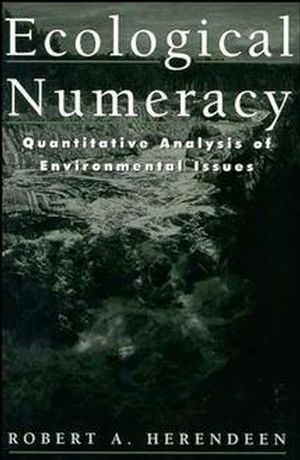Ecological Numeracy: Quantitative Analysis of Environmental IssuesISBN: 978-0-471-18309-9
Paperback
360 pages
April 1998
 This is a Print-on-Demand title. It will be printed specifically to fill your order. Please allow an additional 10-15 days delivery time. The book is not returnable.
|
||||||
Master the fundamental math skills necessary to quantify andevaluate a broad range of environmental questions.
Environmental issues are often quantitative--how much land, howmany people, what amount of pollution. Computer programs areuseful, but there is no substitute for being able to use a simplecalculation to slice through to the crux of the problem. Having agrasp of how the factors interact and whether the results makesense allows one to explain and argue a point of view forcefully todiverse audiences.
With an engaging, down-to-earth style and practical problem-solvingapproach, Ecological Numeracy makes it easy to understand andmaster basic mathematical concepts and techniques that areapplicable to life-cycle assessment, energy consumption, land use,pollution generation, and a broad range of other environmentalissues. Robert Herendeen brings the numbers to life with dozens offascinating, often entertaining examples and problems.
Requiring only a moderate quantitative background, EcologicalNumeracy is a superb introduction for advanced undergraduatestudents in environmental science, planning, geography, andphysical and natural sciences. It is also a valuable professionalresource for environmental managers, regulators, andadministrators.
Environmental issues are often quantitative--how much land, howmany people, what amount of pollution. Computer programs areuseful, but there is no substitute for being able to use a simplecalculation to slice through to the crux of the problem. Having agrasp of how the factors interact and whether the results makesense allows one to explain and argue a point of view forcefully todiverse audiences.
With an engaging, down-to-earth style and practical problem-solvingapproach, Ecological Numeracy makes it easy to understand andmaster basic mathematical concepts and techniques that areapplicable to life-cycle assessment, energy consumption, land use,pollution generation, and a broad range of other environmentalissues. Robert Herendeen brings the numbers to life with dozens offascinating, often entertaining examples and problems.
Requiring only a moderate quantitative background, EcologicalNumeracy is a superb introduction for advanced undergraduatestudents in environmental science, planning, geography, andphysical and natural sciences. It is also a valuable professionalresource for environmental managers, regulators, andadministrators.



